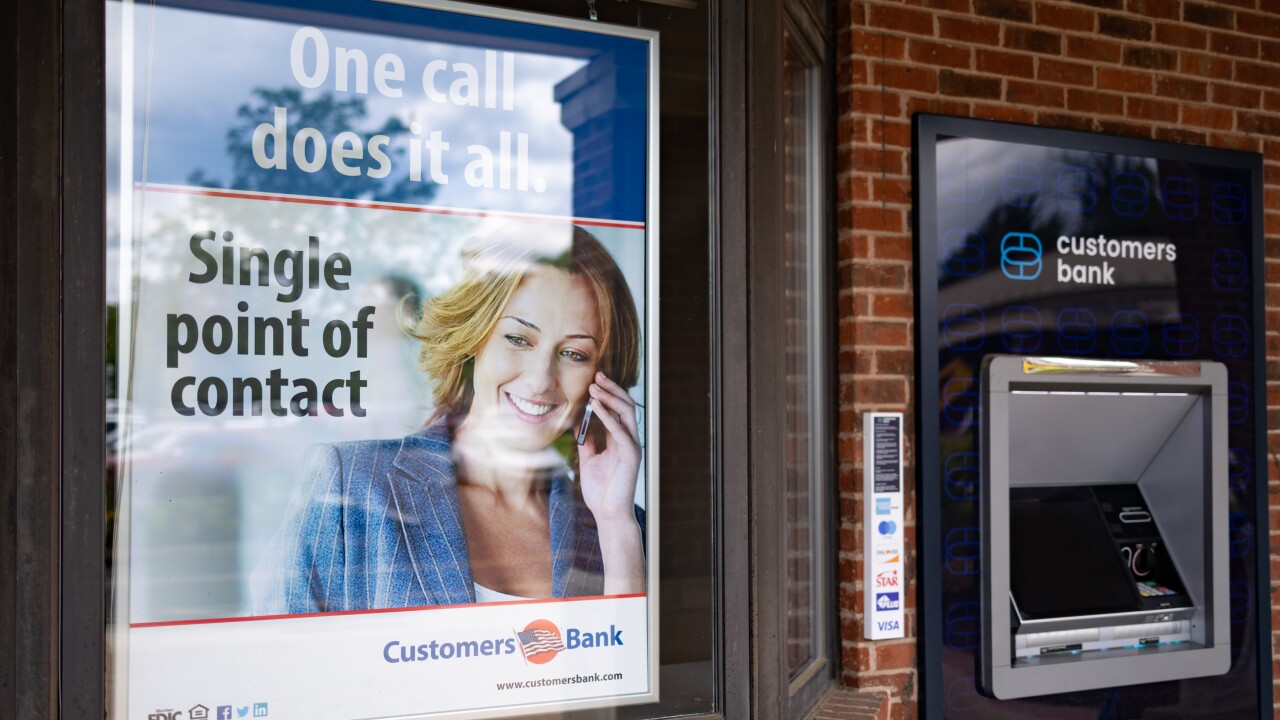-
Student borrowers said private student loan debt is hampering their ability to get married, start a family, buy a house or even work in their field of choice.
June 14 -
The Consumer Financial Protection Bureau will use the data to make recommendations to Congress, which could include changes to the private student loan market.
June 13 -
Bank partnerships with colleges and universities may not pay off for students, the consumer group said in a report unveiled Wednesday.
May 31
It is rare to find an underserved lending opportunity that both improves human lives and makes financial sense – let alone finding it in a $1 trillion market. Fixing our student loan system through a bank-led approach provides this opportunity.
Affordable college financing is a critical part of sustaining the American meritocracy. Over a lifetime, graduates with professional degrees earn an average of $3 million more than high school graduates.
However, college is becoming increasingly difficult to afford. College debt outstanding is approaching $1 trillion, growing at a rate faster than health care, real estate or energy prices, with about $100 billion in annual new originations. Stafford Federal loans fall $116,000 short of the average cost of a private college education. Beyond Stafford loans, Parent and Graduate PLUS federal loans are priced at 7.9% for all borrowers, regardless of creditworthiness, degree type or likely post-college income.
When securitization markets recoiled in 2008, many nonbank lenders exited the business. In 2010, Congress ended the Federal Family Education Loan Program, which previously enabled banks to originate federally-guaranteed student loans. As a result, many banks with smaller portfolios also opted to exit the market.
With the growing dearth of competition, millions of prime credit borrowers have few attractive college loan options. Why are only a limited number of banks serving these borrowers?
Part of the problem is lack of clarity about why college debt has risen during the last decade. Since 2002, college enrollment increased 40% and average weekly wages for college graduates rose 24.9%. In addition, while tuition costs increased, average debt held by college graduates from nonprofit schools increased just 2.2% beyond inflation.
Another part of the problem is that default statistics don't provide an accurate view of charge-offs in a prime portfolio. A recent study estimated a 4% default rate at four-year colleges versus 14% at for-profit colleges. As a stark example, 0.6% of Stanford students defaulted on federal loans from 2009 to 2011, while 18.8% defaulted at the University of Phoenix.
There also is a fear that regulation may eliminate this opportunity. Student loans have become a national election issue, with Republicans and Democrats campaigning against a scheduled doubling of the subsidized Stafford loan rate. While well-intentioned, keeping Stafford rates from doubling provides a one-year extension and will save borrowers only $8 a month on average. It's unlikely either side can offer a fiscally feasible solution without significant cost.
And there is a concern that the student loan bankruptcy exemption may change. Despite significant fees to be collected by bankruptcy lawyers who lobby Congress every few years, a change in bankruptcy law should not significantly affect prime loan performance. It is unrealistic to think that many borrowers with low total debt, stable income, proven credit history and assets would choose to default, given the expense and credit impact of bankruptcy.
There are significant benefits for a bank to provide student loans for prime borrowers, including interest income growth, risk diversification and quality customer growth. For in-school loans, a co-signer with strong credit history and significant collateral should be required. For consolidation loans, borrowers should have prime credit, a proven repayment history, low debt and verified stable income.
Experience has shown that designing and carrying out the right student loan strategy can be highly effective, particularly is focused on borrowers with proven repayment histories and strong credit. Sallie Mae, the nation's largest private student loan provider, reports a charge-off rate of just 1.4% across its entire portfolio of traditional private loans with 25 or more payments.
Yet many banks – particularly of smaller size – cannot generate the volume necessary to justify the up-front cost of launching a program, including marketing, personnel, legal, origination and servicing.
I've founded a company to provide a solution to this challenge, and since launch we've enabled small and medium sized banks to provide student loans without incurring significant cost or staff requirements. We believe our approach offers significant value, but we can't do it alone. Realizing transformational change will require many more offerings and healthy competition to meet the needs of banks of differing sizes and across varying footprints nationwide.
So while it is rare to find an unmet lending opportunity that both improves human lives and makes financial sense, fixing our nation's student loan financing system provides just that. Forwarding thinking bankers – if they are willing to answer the call – are well positioned to lead the charge.
Uri Pomerantz is the founder and CEO of Bright Frontier Financial Inc., which provides banks with a platform to provide student loans. info@brightfrontier.com





